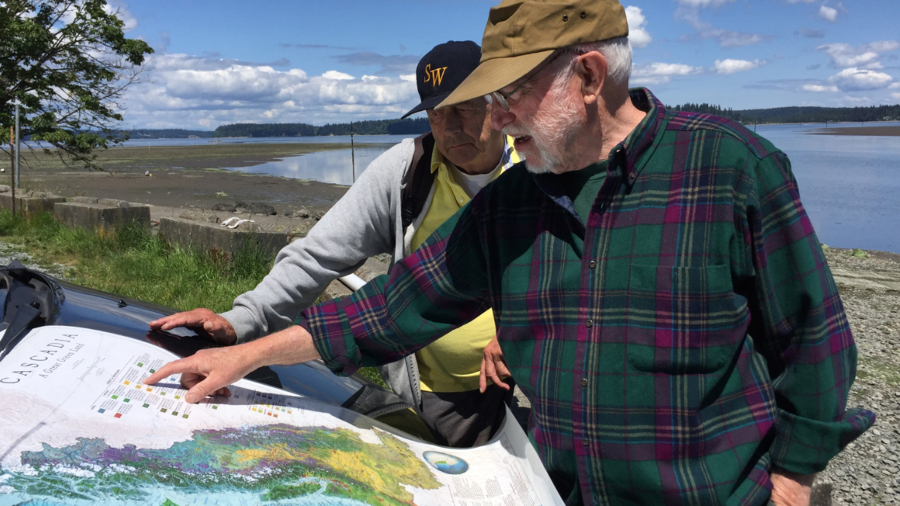NISQUALLY REACH — It was here before anyone made a map and called this corner of it the Pacific Northwest.
“To me,” said David McCloskey, waving an aging hand toward tidelands formed millenniums ago, “it’s an energy field.”
McCloskey, a retired sociology and ecology professor who has spent a lifetime exploring the region’s mountain ranges and waterways, was standing here near the southernmost stretch of Puget Sound. He was trying to explain not just the view in front of him, but all of Cascadia, an elusive realm he helped conceive decades ago that stretches from Northern California to the coast of British Columbia, and deep into the imagination.
The idea of a separate land in the top corner of the country rose and faded over the years, a blend of science, environmentalism and a fuzzy sense of otherness that served as a counterpoint to the ceaseless commercial growth of Seattle, its once-quieter capital. Some called it New Age hokum. Others said it represented a true “Ecotopia,” maybe even a last redoubt against the worst effects of climate change.



